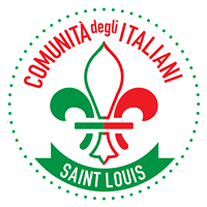|
CHRIS NAFFZIGER - St Louis Magazine
Mardi Gras season is here, and in the Soulard neighborhood of St. Louis, the celebration of the French holiday is in full swing. But what many Americans don’t realize is the period of festivities before the piety and holiness of Lent is also celebrated by other names and in other ways throughout Europe, particularly in Italy, where the holiday is known as Carnevale. Comunità degli Italiani, a local organization founded by Michael Cross, will be celebrating Carnevale with art, cocktails, and dinner this Saturday at Mad Art Gallery in Soulard. For Cross, who grew up in an Italian-speaking household (his mother was born in Trieste, in the far northeastern corner of Italy), founding the Comunità in 2017 came out of a love for his homeland, but also out of a desire to convey an accurate image of contemporary Italy. While there is a popular image of Italy in America, it's often outdated or inaccurate. Italy is an incredibly diverse country, with dozens of unique regions, cuisines, and dialects of the Italian language, and was not even a unified nation state until the mid-19th century. However, the Comunità today in St. Louis can boast members from each of the modern 20 regioni of Italy. Cross works with his fellow members to make recent immigrants from Italy and Italians who may have married Americans feel more at home in St. Louis. “It’s a home away from home for Italians who live in St. Louis,” Cross explains, “and we introduce St. Louisans to authentic contemporary Italian culture and language.” But perhaps what Cross is so proud of in the Comunità is that despite members coming from all over Italy, there is a shared sense of pride in their home country. Consequently, for this year’s celebration of Carnevale, the unique way in which the city of Venice celebrates the holiday was chosen. While most Americans are familiar with the city of canals located in the middle of a lagoon, many people may be surprised that Venice was once the capital of an independent maritime republic with territory that stretched as far to the east as the island of Cyprus. Its merchants traveled as far away as China and modern-day India (Marco Polo was from the Venetian Republic) to buy exotic wares, and then turned around and sold to Europeans as far away as Germany. It also maintained strong ties with the Eastern Orthodox Church in Constantinople. When it came time to celebrate Carnevale in Venice, all those rich cultural traditions, as well as all those riches, converged. Perhaps the most iconic image of Venetian Carnevale are the masks, which are often adorned with gems and other expensive fabrics, such as silk, which was imported from China to Venice. Cross reminded me that none of these lavish materials came from islands out in the middle of an Italian lagoon. Also, Venice was famous for its glass, produced on the island of Murano, allowing for more elaborate decorations of costumes. Because Venice was a republic, and a very wealthy one at that, its political and social life was not the same as cities such as Florence or Rome, so confraternities and other groups would collaborate to decorate barges that would float past the Doge’s Palace in the broad St. Mark’s Basin. Celebrations such as these are depicted in the paintings of famous Venetian painters such as Canaletto and Bernardo Bellotto. Masquerade parties followed the grand processions of the boats. Cross jokes, “People are dressing up to kill, so to speak.” Along with the Carnevale celebration, there will also be an exhibit of the paintings of Italian artist Evelyn Astegno, who originally hails from Vicenza, a city in the Veneto, the region around Venice. Originally trained as an architect, her paintings feature the interiors of Venetian palazzi and other iconic buildings throughout the city of Venice. For Cross, the inclusion of Astegno continues the theme of celebrating contemporary Italian culture; while some of the greatest Renaissance painters such as Titian were active in Venice, there is still very much a vibrant and lively artistic community in the city today. Some St. Louisans may be surprised to hear that she has relocated to the Midwest from Venice, but Cross emphasizes that many Italians now called the Gateway City home. As Cross summarizes: “There’s a unity of Italians here in St. Louis, north and south. It’s beautiful. We keep politics to an absolute minimum. We’re a happy community.”
0 Comments
Leave a Reply. |
AuthorsGiovanna Leopardi Year
All
Archives
July 2024
|
|
Contact us:
|


 RSS Feed
RSS Feed
